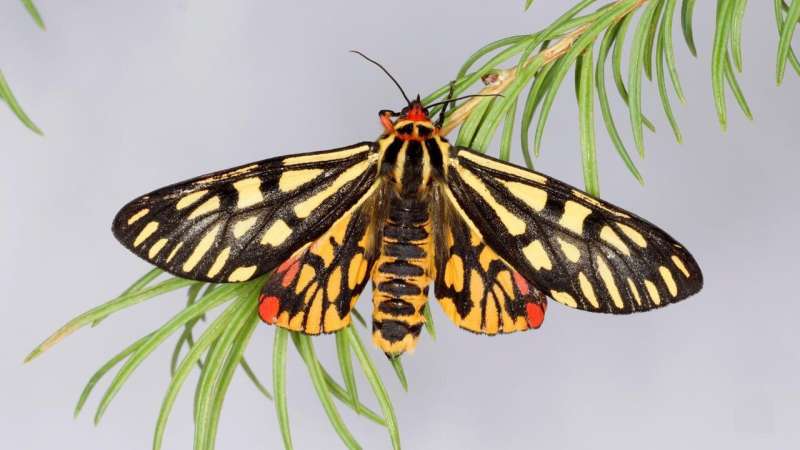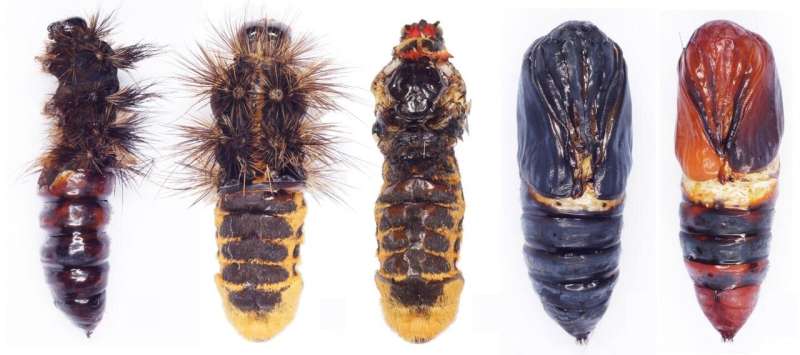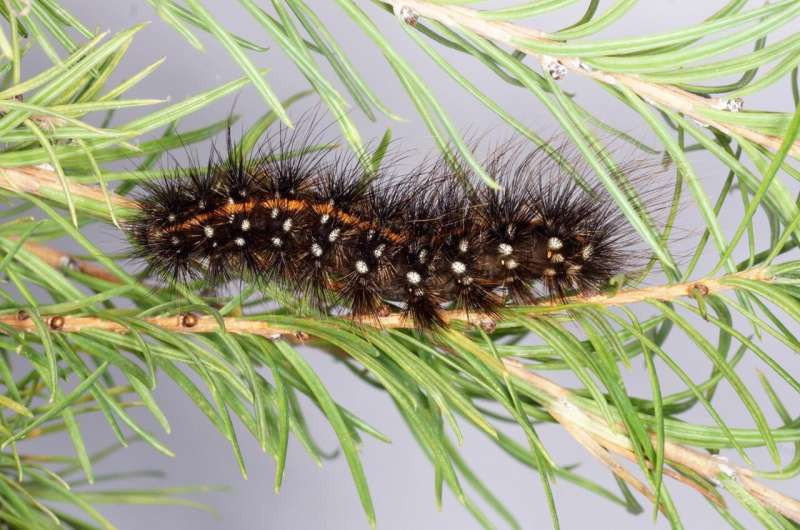Development anomalies recorded for the first time in a rare tiger moth

The Menetries' tiger moth (Arctia menetriesii) is one of the rarest and most poorly studied Palaearctic moth species. Even though its adult individuals are large and brightly colored, they are difficult to spot, because they aren't attracted to light, they're not active at night, and they fly reluctantly. Currently, the species only inhabits two countries—Finland and the Russian Federation, and is included in the Red Lists of both, as Data Deficient in the former and Vulnerable in the latter.
For 13 years, researcher Evgeny Koshkin of the Institute of Water and Ecology Problems of the Far Eastern branch of the Russian Academy of Sciences kept searching for the elusive Menetries' tiger moth in its habitat in the Bureinsky Nature Reserve, 400 km north of Khabarovsk, Russia, but he only ever found it in 2018, in what was the first record of this species in 34 years in this region. That's how rare it is.
After collecting eggs from a female moth, Koshkin documented the species' biology under laboratory conditions and described its immature stages in the open-access, peer-reviewed scientific journal Nota Lepidopterologica. For the first time, detailed photographs of all developmental stages of this species have been published.
In laboratory conditions, the development cycle of the Menetries' tiger moth from egg laying to an adult individual lasts between 72 and 83 days. Out of the 105 eggs that the female moth laid in captivity, however, only 13 transformed into adults, and out of those, only four were able to spread their wings. In the last larval instar, about 75% of the larvae died immediately before pupation, and a number of metamorphosis anomalies were observed in the ones that survived.

This is the first time that such anomalies and morphological defects of pupae are documented in the Menetries' tiger moth, and it is possible that they occur in a similar way in nature. Some metamorphosis anomalies manifested as larva-pupa intermediates due to disrupted molting, and pupae with severe anomalies produced adults that were unable to inflate their wings.

It is possible that the diet of the laboratory-reared larvae might have had something to do with the high mortality rate before pupation and the metamorphosis anomalies during it. Some of the larvae were fed on Aconitum leaves and larch needles during certain periods of their lives, and it is possible that toxic compounds found in these plants might have impacted their health and development. More research on larval diet would be needed, however, to confirm or reject this hypothesis.
More information: Evgeny S. Koshkin, Life history of the rare boreal tiger moth Arctia menetriesii (Eversmann, 1846) (Lepidoptera, Erebidae, Arctiinae) in the Russian Far East, Nota Lepidopterologica (2021). DOI: 10.3897/nl.44.62801
Provided by Pensoft Publishers





















